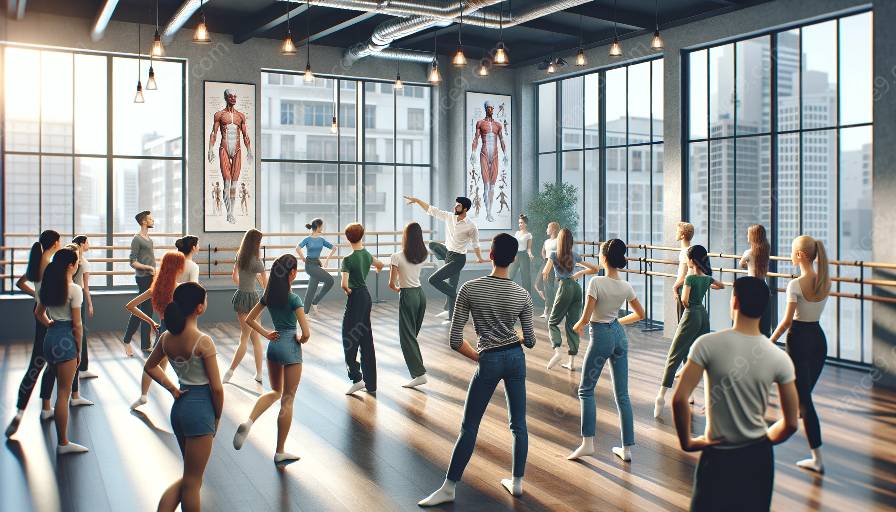Dance history and appreciation are essential components of dance education and training. Teaching these subjects effectively requires a combination of engaging teaching methodologies and a deep understanding of dance history and its cultural significance. In this comprehensive guide, we will explore compelling strategies for enriching students' appreciation of dance through the study of its history and cultural context.
The Importance of Dance History and Appreciation in Dance Education
Before delving into the strategies for teaching dance history and appreciation, it is crucial to understand why these components are so integral to dance education and training. Dance history offers valuable insights into the evolution of dance forms, styles, and techniques. By studying the historical context of various dance movements, students gain a deeper understanding of the cultural, social, and artistic influences that have shaped dance over time.
Moreover, an appreciation of dance history fosters respect for the artistic heritage of dance, as well as an awareness of the diverse cultural traditions that have contributed to the rich tapestry of dance around the world. Through the study of historical dance works and influential choreographers, students develop a broader perspective on the art form and learn to interpret dance within its historical and cultural frameworks.
Engaging Teaching Methodologies for Dance History
When it comes to effectively teaching dance history, educators can employ a variety of engaging methodologies to captivate students and make the learning process more immersive. Utilizing multimedia resources such as videos, documentaries, and archival footage can bring historical dance performances to life, allowing students to visually connect with the past and witness the evolution of dance styles through time.
Furthermore, incorporating interactive activities, such as reenactments of historical dance pieces or role-playing exercises based on significant dance eras, can enable students to embody the movements and gestures of bygone dance periods, fostering a more tangible understanding of historical dance styles. Integrating guest lectures by dance historians or practitioners can also provide firsthand insights into the socio-cultural contexts of historical dance movements, enriching students' learning experiences.
Contextualizing Dance History within Cultural Studies
Teaching dance history within the framework of cultural studies offers a holistic approach to understanding the interconnectedness of dance with broader social and cultural phenomena. By contextualizing historical dance developments within specific cultural contexts, educators can illuminate the societal narratives, political influences, and artistic movements that have shaped dance as a reflection of human expression throughout history.
Integrating interdisciplinary perspectives from anthropology, sociology, and art history allows students to explore the intersections between dance and other cultural domains, fostering a more comprehensive understanding of dance history and its cultural significance. This approach encourages students to critically analyze the role of dance within diverse cultural frameworks, leading to a deeper appreciation of the art form's global heritage.
Interactive Exploration of Dance Masterworks
An effective strategy for teaching dance appreciation involves the interactive exploration of dance masterworks, iconic choreographies, and influential dance artists. By studying seminal works of dance through close analysis and in-depth discussions, students gain an appreciation for the artistic innovations, thematic explorations, and technical virtuosity embodied in these influential pieces.
Incorporating comparative studies of dance masterworks across different eras and genres allows students to discern the evolution of choreographic styles, thematic motifs, and performance aesthetics, fostering a nuanced understanding of the diverse forms of dance expression. Additionally, guiding students in creating their own interpretations or reimaginings of dance masterworks can cultivate creativity and critical thinking, enabling them to engage with dance history on a more personal and expressive level.
Integrating Dance Education and Training with Historical Context
Effective teaching of dance history and appreciation involves seamlessly integrating historical context into practical dance education and training. By connecting theoretical knowledge of dance history with practical applications in technique classes, choreography workshops, and performance rehearsals, educators can enhance students' understanding of how historical influences continue to resonate within contemporary dance practices.
Moreover, emphasizing the historical lineage of dance techniques, movement vocabularies, and choreographic innovations within dance training programs instills a sense of continuity and evolution, linking students to the legacy of dance practitioners and innovators who have shaped the art form over time. By bridging the gap between historical awareness and embodied practice, educators empower students to embrace dance as a living, evolving tradition rooted in historical legacy.
Conclusion
In conclusion, effective teaching of dance history and appreciation requires a multi-faceted approach that combines engaging methodologies, cultural contextualization, interactive exploration, and seamless integration with dance education and training. By immersing students in the richness of dance history and its cultural tapestry, educators can inspire a deeper appreciation for the art form and empower the next generation of dancers to honor and perpetuate the legacy of dance through their artistic endeavors.















